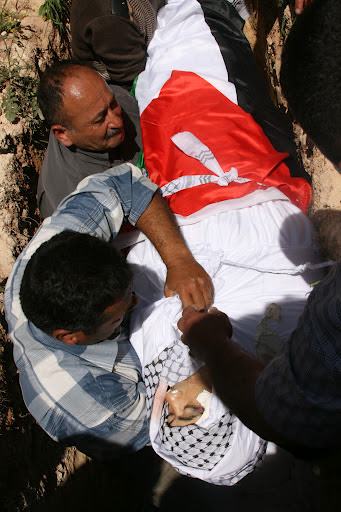Tag: Nablus
-
Fadi Abu Zeitoun, killed as settlers attacked farmers
by Rana H. 9 April 2012 | International Solidarity Movement, West Bank Israeli settlers attacked and chased a group of Palestinian farmers last Thursday, causing a tractor to flip over during the chase, causing the death of the Palestinian driver. On Thursday, April 5th, armed settlers from the illegal Israeli colony of Itamar attacked a…
-
Day of the Child: Houses overturned, 20 arrested by “American style” Israeli military
by Lydia 8 April 2012 | International Solidarity Movement, West Bank April 5th marked a day to celebrate the children of Palestine. This year the Israeli military decided to contribute to the special day of the children of Kufr Qaddoum by invading the village and kidnapping 20 fathers and brothers. Boys and men were taken…
-
Amani al Khandaqja released following hunger strike
by Lydia 6 April 2012 | International Solidarity Movement, West Bank “You are a very clever woman Amani, you are the first free woman from Ashkalan, this brings me great frustration.” These are the words of the Chief of Intelligence at Huwarra Camp where Amani al Khandaqja was forced to go during her first Sunday…



